6 Customer Retention Myths That Are Hurting Your Bottom Line
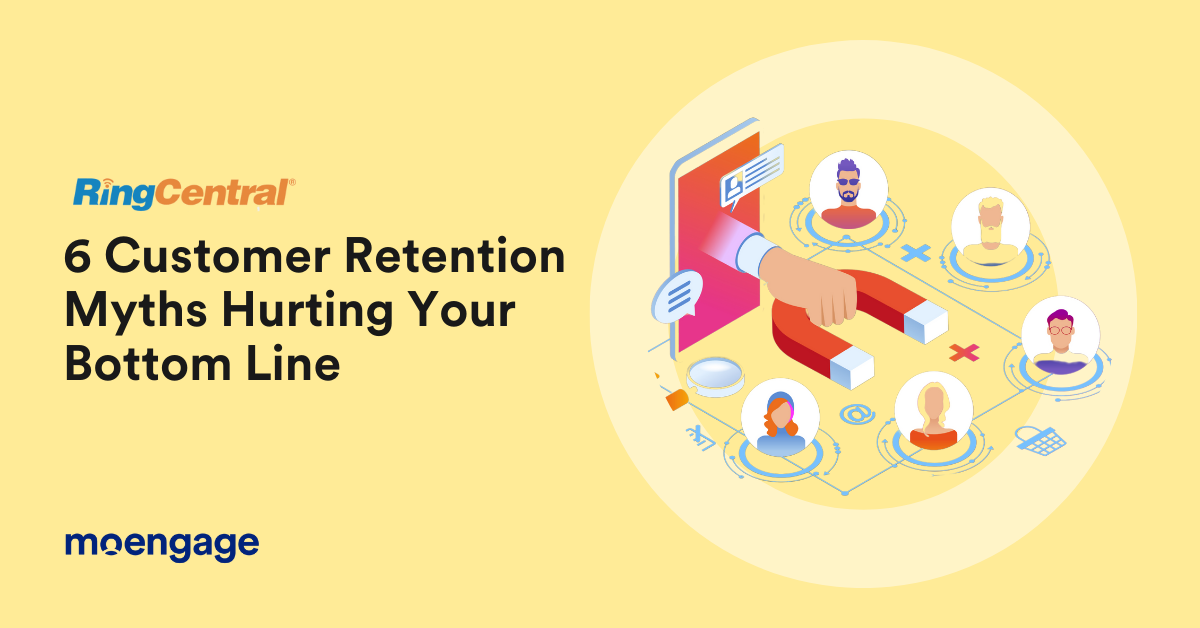
Reading Time: 7 minutes
Customer retention is a key determinant of business success. Among the many metrics intended to measure performance, it’s one of the most valuable to track.
The benefits of strengthening customer loyalty can be extraordinary. Increasing customer retention rates by only 5% can increase profits by an incredible 25 to 95 %.
This article aims to dispel common misconceptions about customer retention with facts and realities.
Customer Retention Myths and How They’re Hurting You
The myths that surround customer retention have the potential to be actively harmful to building a loyal customer base, and that’s not a risk your business wants to run.
With this article, we hope to bring some of the most common ones to light, expose them, and make sure your business knows how best to avoid them.
Myth #1: Great marketing strategies are all you need to retain customersFact: You need a dedicated customer retention strategy too |
A marketing strategy is a powerful tool to attract new customers and strengthen your brand image, but only having this strategy in place is one of the most common errors committed by company decision-makers.
Marketing involves understanding who your target audience is and analyzing what the competition is doing. After extensive research, your team should create a detailed plan outlining your business strategy. This may (and most likely should) be a combination of traditional and e-commerce marketing.
This plan ought to include campaigns and future actions to capture and retain potential clients. This might be in the form of a fun competition or loyalty program. Such strategies can be extremely effective. For example, 79% of consumers claim loyalty programs make them more likely to continue purchasing from a brand.
While a marketing strategy can help you acquire new clients, it’s of little to no use without a customer retention strategy. This focuses on keeping existing customers rather than merely hunting for new ones.
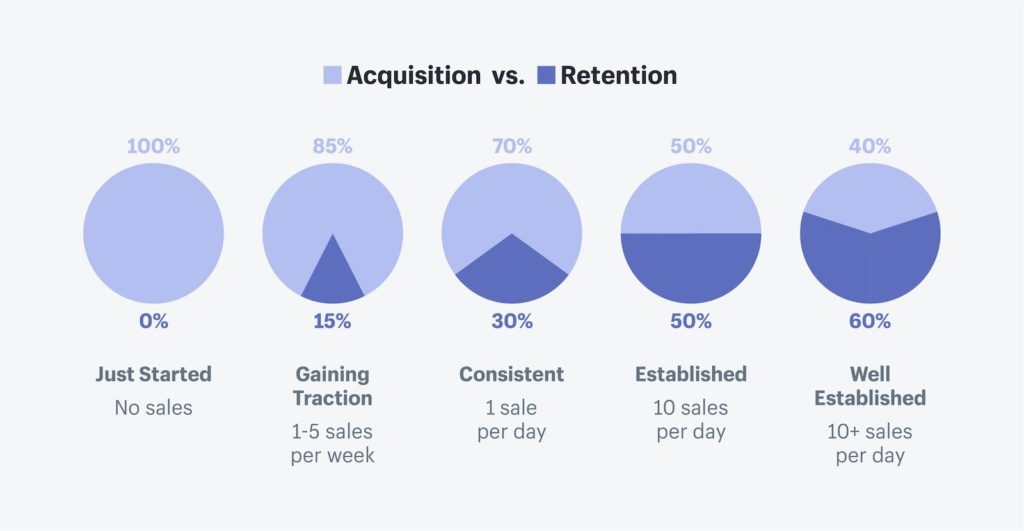
This involves several methods, like company newsletters, analyzing churn metrics, and implementing a customer feedback loop. These tools are crucial to help secure customer loyalty.
In essence, marketing and customer retention strategies are the combined key to a successful business. Separately, they can be quite effective, but together, they ensure you’re targeting potential customers at the same time as you retain your existing ones.
Myth #2: Happy customers = loyal customersFact: Customer satisfaction does not guarantee loyalty |
Customer loyalty boils down to how likely an existing consumer is to purchase in the future. Some characteristics of loyal customers include not switching to a different brand and/or recommending a company to friends and family.
It may seem obvious that a satisfied customer has a higher chance of becoming devoted to a brand. But, in reality, customer satisfaction alone is not enough to secure loyalty. 73% of U.S. consumers that are loyal to a certain brand said they’d still take advantage of a cheaper offer from a competitor.
According to data analyzed by Yotpo, the top reason why someone is loyal to a brand is the product itself. This is followed by great deals and customer service. The first two reasons (product and great deals) accounted for 81% of responses.
This doesn’t mean you can’t fortify your customer experience, and revolutionary tools like dialler systems can certainly have beneficial effects on customer loyalty. But working on these other areas may have an even greater impact.
Though keeping consumers happy should be a priority, it doesn’t secure brand loyalty in itself. Customer satisfaction can lead to fidelity, but there are other boxes to tick if you want consumers to return and continue purchasing your products.
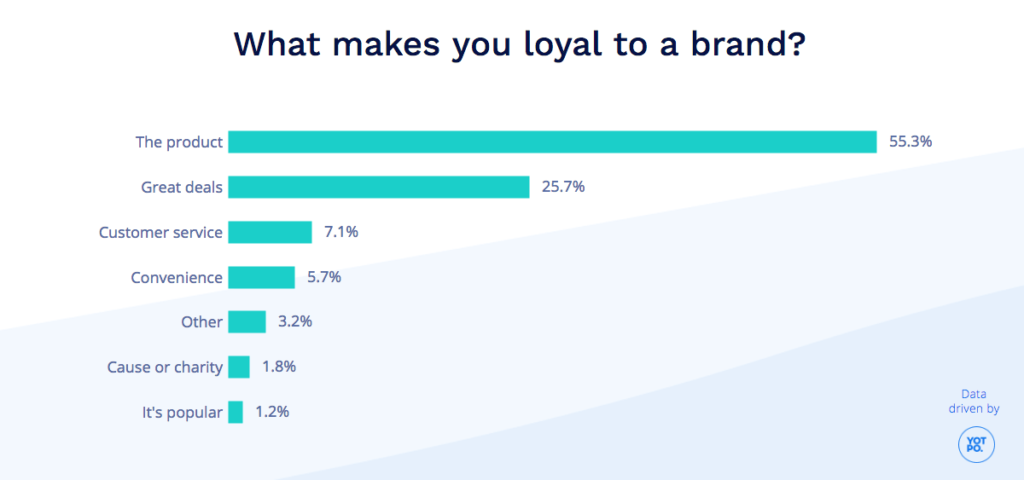
Myth #3: Customer service drives customer retentionFact: Marketing and customer retention strategies play a bigger role in fostering retention |
We’ve already seen that customer service is selected by a minority as the reason why they’re loyal to a brand. If you use salesy and aggressive cold-calling scripts, you could even harm your conversion rates.
This doesn’t mean you should stop improving the customer experience, but working on it isn’t a magic trick to rocket customer retention.
Indeed, 65% of consumers still quote the quality of customer service as a factor when deciding whether to make a purchase. However, you’ll see a more significant effect on retention rates by working on your marketing and customer retention strategies.
If companies don’t work on developing an effective and up-to-date strategy, they ignore the most crucial part of customer retention. Thus, businesses should always search for ways to attract and cater to customers, adapting to trends (like using a YouTube video maker) to expand their audience.
For example, if you consider using your social media strategy to engage users, you will no longer need a professional editor to manage video content. DIY video editing is now accessible to and easy for all businesses, with many options to choose from. Given its effectiveness, it’s a marketing trend that’s most definitely worth exploring.
Myth #4: New customers are more valuable than loyal customersFact: Loyal customers are a driving force for business success |
Most often, when companies aren’t generating enough revenue, their strategy is to acquire new customers. This involves investing a lot of time and money in marketing or customer service strategies that often don’t give the results they desire.
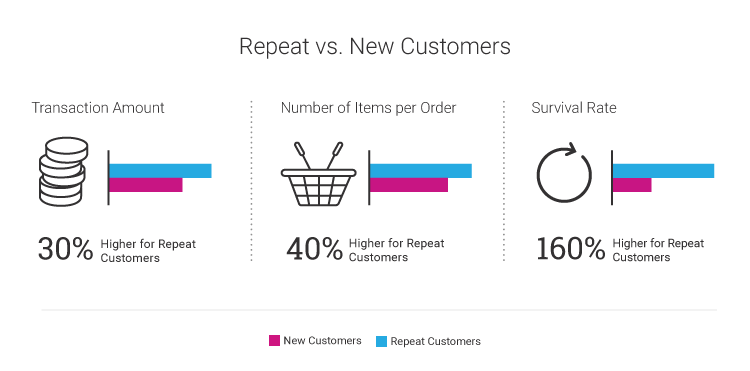
While a company needs to reach the biggest possible audience, they often forget what they already have: an army of loyal clients ready to repurchase the products they know and love and try out their new creations. Every repeat purchase they make increases their value to the company.
It shouldn’t come as a surprise that the success rate of selling to an existing customer is 60-70%. On the other hand, the chance of selling products to a new customer is only between five and 20%. By targeting existing users, you’re increasing profitability and securing faithful customers.
For example, food delivery apps like Uber Eats send special discounts via email to frequent users. The more a person orders, the more discounts and special offers they’ll receive. The company benefits from this because they secure user loyalty and avoid losing them to the competition.
Not only are existing customers more likely to purchase from you, but it’s five times cheaper to retain them compared to acquiring a new customer. Wasting money and resources on potential clients who may not even use your services isn’t a wise decision.
Myth #5: Simple onboarding is key to customer retentionFact: Customer onboarding needs to be unforgettable and captivating |
Customer onboarding encompasses the activities involved in introducing someone to your product or service. This process focuses on guiding customers through using your product or services effectively.
It’s all about the customer and how to make their experience as smooth and doubt-free as possible. Think about testing, software improvements, or cloud migration to speed up your services.
Ray McKenzie, CEO of Starting Point Technologies, explains why customer onboarding is essential. He says:
“If the onboarding or initial use is successful it becomes an integral part of their business and is tough to remove.”
However, he also points out that if onboarding doesn’t happen, users may cancel the service.
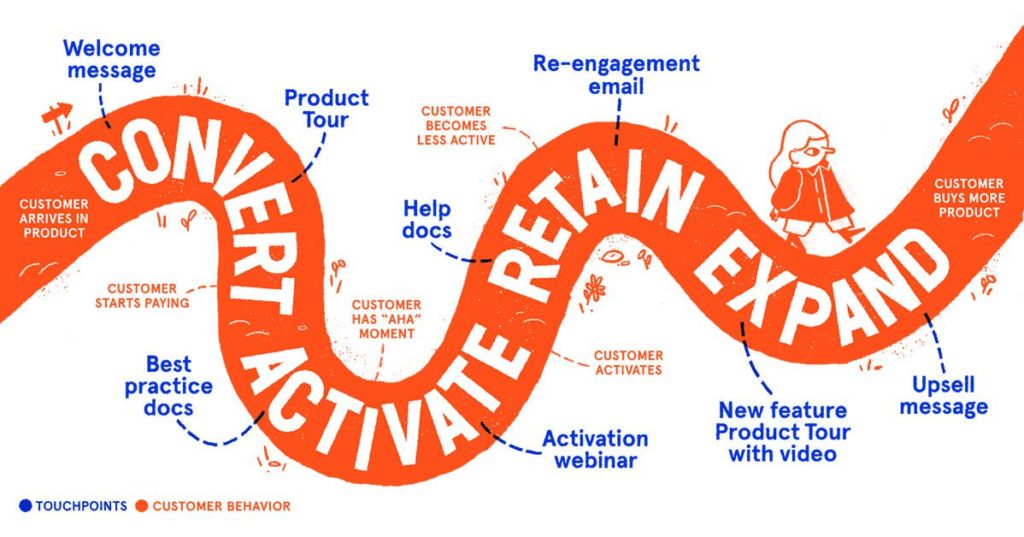
This is especially important for tech companies. App uninstall rates are shocking. 47% of uninstalls take place during the first 24 hours. This means the app’s design and layout should be simple from the beginning or users won’t hesitate to switch to a competitor.
The best way to curate your onboarding process is to incorporate seamless customer support from the first moment a potential user finds your product. How you onboard them sets the tone for your relationship with them. Memorable customer onboarding reduces churn and increases loyalty.
It’s important to encourage new users to use your product through personalized push notifications or email communications, especially at the beginning. This increases the chance of your brand becoming indispensable to them.
Myth #6: Customer loyalty and retention cannot be measuredFact: There are specific metrics that can measure customer loyalty and retention |
As a company, measuring, controlling, and analyzing everything that happens in your business is crucial. This helps you see what’s going well and what might need a change of strategy. There are several types of data you can keep an eye on when it comes to measuring customer loyalty and retention.
Some of the KPIs that can predict loyalty include the redemption rate (RR) and customer retention rate (CRR). The first offers an overview of user behavior and whether customers are engaging with a brand’s loyalty program. The latter helps retailers to see if their strategies are attracting new customers or keeping existing ones.
Metrics like customer lifetime value (CLV) show the total revenue acquired during the entire relationship with a consumer. Companies should pay special attention to these numbers as they help identify the most valuable customer sector. This also prioritizes long-term profit, stabilizing the company’s economy.
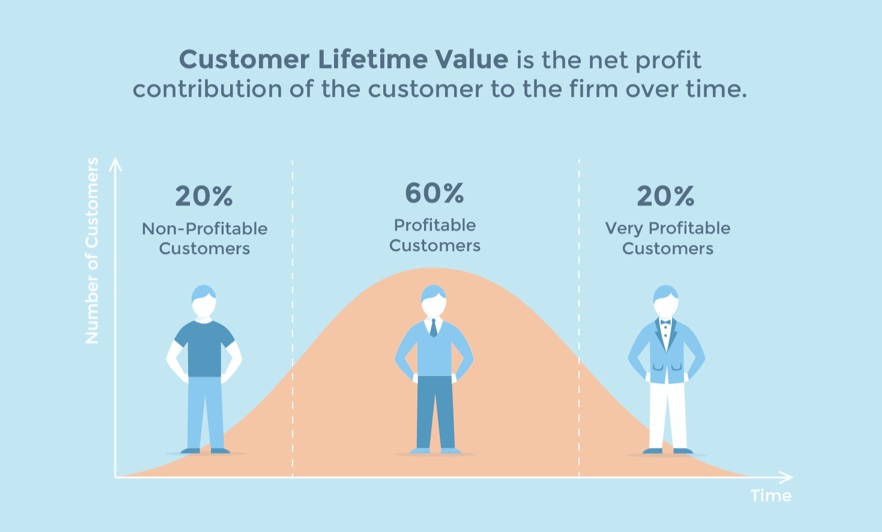
Another thing companies can do is import user data and create graphs of customer activity. This helps businesses visualize customer behavior to determine the areas they need to work on.
Finally, by asking customers to send suggestions, you can answer internal questions, such as “what is our product doing to help solve queries” or “how satisfied are customers with our new app”.
Takeaways
Misconceptions about customer retention can cause businesses to lose opportunities and customers. While the mistakes made might be simple and easy to rectify if spotted, they can nonetheless cause long-term damage to your company when left unchecked.
On the other hand, having the right information on customer retention can help businesses to easily and effectively boost their bottom line. This means the right time to act is now. Fix your mistakes today, and see your profits soar tomorrow.













